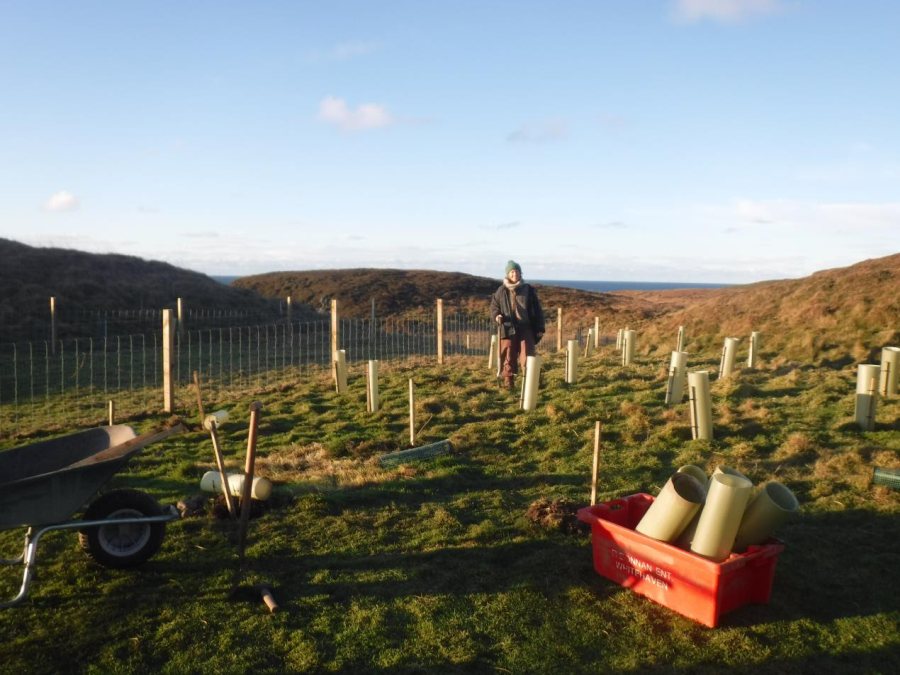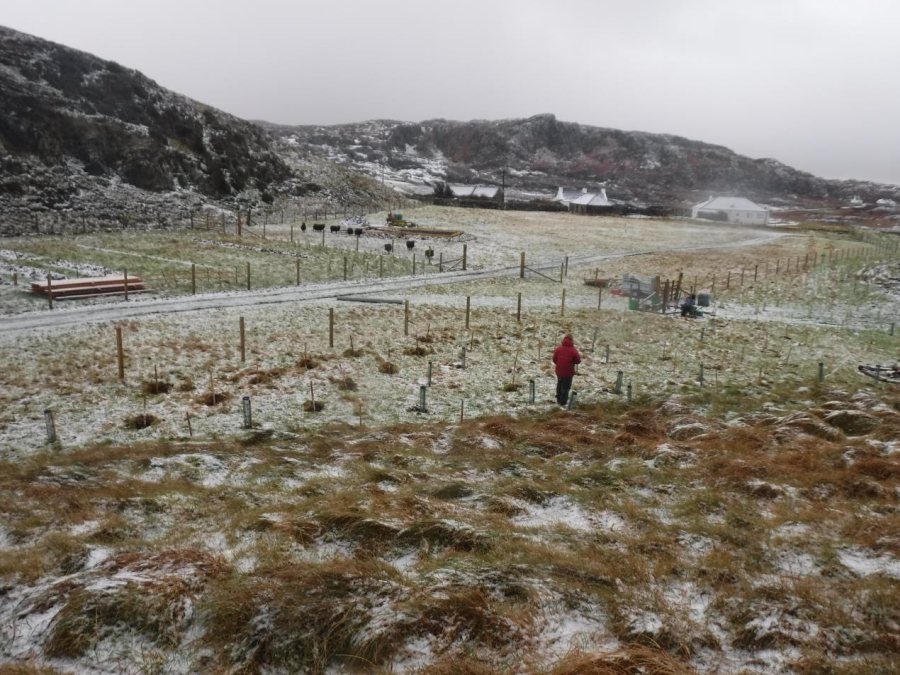
A tenancy termination by the Crofting Commission on the Isle of Colonsay paved the way for new entrants to bring a croft back into purposeful use.
In less than two years, the Wee Croft has, and continues to, positively contribute to the social and environmental fabric of the island community.
After a summer internship in Alaska on an organic vegetable farm, new entrants Lizzie and Darragh Keenaghan realised that they wanted to do something similar.
Lizzie said: "I always had it in my mind that this is what I wanted to do, but Alaska is a long way from home, so I started looking for similar opportunities in Scotland."
Darragh, who has a Masters in Environmental Sustainability from Edinburgh University, had a similar experience while living and working on a small farm in Beauly which cemented their desire to find their own croft.
“It took us a long time to find the right croft - a place we could afford,” said Lizzie.
“We put adverts in newspapers looking for a few acres and spent time traveling across Scotland searching for the right place, but we weren’t having much luck.”
After trips to Colonsay in the southern Hebrides for beekeeping courses, the couple heard that there were community-owned crofts on the island.

In 2012, Colonsay Community Development Company, with aid of the Scottish Land Fund, purchased land creating five bare land crofts; the purpose being to offer opportunities and encourage more families and individuals to the island.
“We registered our interest with Colonsay Community Development Company, but at the time all crofts were tenanted.
"Things changed and, in 2019 after an application process, we were offered the tenancy. We renamed the croft ‘The Wee Croft’,” said Lizzie.
Since taking on the croft, it’s been a busy time for Lizzie, Darragh, and Lizzie’s parents, who also relocated to Colonsay.
As a family they have managed to turn what was once a neglected croft into one that is providing for their family and the wider community.
“We worked closely with the Woodland Trust last winter to plant over 700 broadleaf native trees as a shelterbelt, and through the CAGS grant scheme, we’ve been able to afford new fencing which has helped diversify the croft with the introduction of livestock.
“In September we purchased eight Hebridean ewes. The RSPB kindly loaned us their tup and this spring we had our first lambing experience," Lizzie said.
"Ten healthy lambs alongside their mothers now enjoy the common grazing that we share with two other community-owned crofts."
Alongside the livestock and agroforestry, Lizzie and Darragh have a brood of hens and thanks to the CAGs grant scheme have recently purchased a Polycrub kit; a sturdy tunnel from Shetland to expand the range of vegetables they can grow, and the length of the growing season.
“We’re thankful for the help and support of Colonsay Community Development Company and the Crofting Commission, who were great in talking us through the registration process, formalising the tenancy and answering all of our questions,” said Lizzie.
With over 20,000 crofts in Scotland underpinning this culturally important way of life in Scotland’s highland and islands, it is the Crofting Commission’s duty to ensure that croft tenancies are in the hands of people who will put them to purposeful use.
Crofting Commissioner, Mairi MacKenzie, said: “Stories like Lizzie and Darragh’s are a great example of the impact crofts can make and how they can support thriving communities.
“The Commission has a responsibility to enforce the three main crofting duties which are around cultivation and purposeful use, residency within 30 km and not to misuse or neglect.
"Sometimes the Commission can be seen as a distant law enforcer but, ultimately, we’re here to help ensure the proud continuation of crofting in Scotland and support those who want to make it their home and their livelihood.”
